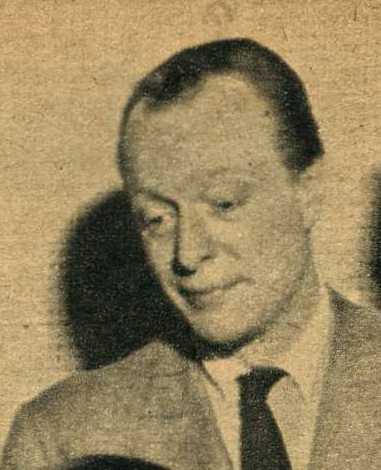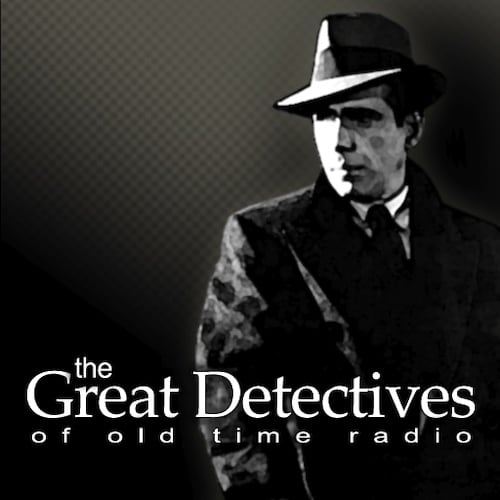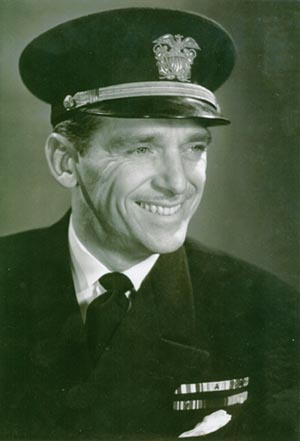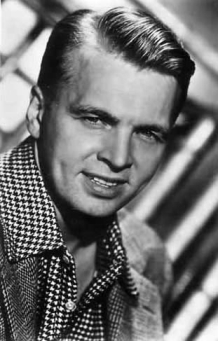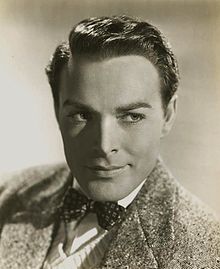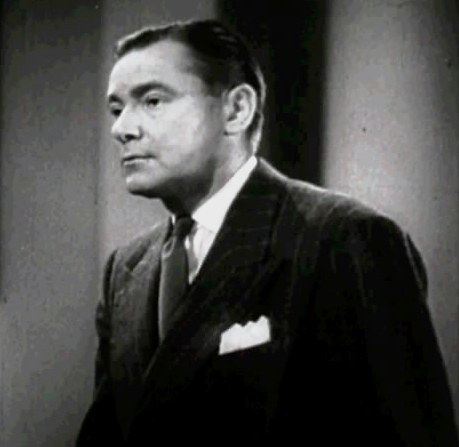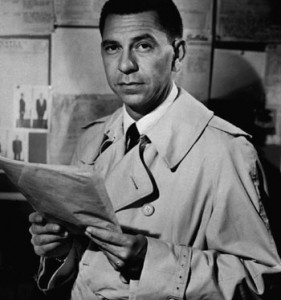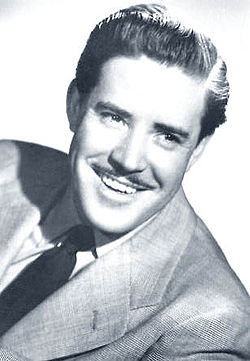One could be forgiven for thinking audio drama was well and truly dead in the 1960s, given the obscurity of most of the offerings. However, the 1970s would include numerous attempts to revive radio drama that would be far more prominent.
NPR
National Public Radio was chartered in 1970 and soon stepped into the world of audio drama with the series Earplay. How soon appears to be a matter of debate as are nearly all details about Earplay. Not only is there debate as to when Earplay started, but also as to when it ended with some saying it occurred in 1981, others in 1982, and still others some time in the 1990s. There’s an amazing amount of contradictory information around this series, if you rely on online sources. I found errors in articles published on NPR-related websites. I’ve accessed some books and newspapers and have a closer approximation of what happened, however a full knowledge of what happened to Earplay would require a multi-day trip to Wisconsin and hunting down books, studio records, and any surviving production staff. However, for our purposes that would be overkill. Here’s the best approximation I can find of what happened:
The Corporation for Public Broadcasting (CPB) extended a $150,000 (nearly $1 million in 2021 money) grant to fund a year of audio drama productions through the University of Wisconsin Extension Radio project and station WHA through a program known as Earplay. The grant was provided in 1971 and accepted by the University of October. However, audio dramas wouldn’t start to air until the following year.
The project by University of Wisconsin Professor Karl Schmidt. Schmdit had gone to New York to be a radio actor but left disillusioned by the lack of opportunity and the general “soapiness” of the New York radio scene. He made it clear he wasn’t trying to create “the good old days.” Initial plans for the series was for short plays, under 20 minutes, preferably under 15 minutes, and certainly no longer than 30 minutes. He also wanted the scripts to keep in mind that American listeners generally listened to radio while doing something else.
A nationwide call for writers went out and there was a contest for scripts. An ad in the Daily Tarheel advertised a contest where $15,000 in purchase awards would be given out to twenty scripts chosen. This ads up to an average award of $750 per winner for writing a 15-20 minute radio play (or nearly $5,000 in today’s money.)
Earplay’s exclusive focus on shorter works didn’t last. They began to sign contracts with well known and prominent playwrights to produce critically-acclaimed, hour-long dramas, many of which later became Broadway plays. Earplay also experimented with new methods of sound and worked radio drama producers in other countries, particularly Canada and the U.K. In order to be able to afford to work with major playwrights, Earplay formed the Commissioning Group with six other countries to add their rights fees to the amount that Earplay was contributing. Earplay won the Peabody Award and was also the first American production to receive a Prix Italia award.
Earplay’s position of strength in the radio drama world was ultimately undone by NPR. Each year, they obtained funding from CPB as well as the National Endowment for the Arts (NEA). However, NPR wanted to make their own proposal for funding for audio drama programming to these two agencies and asked Earplay not to submit their own proposal.
Many producers at non-profit radio theaters were unhappy about the money Earplay received. Yuri Ravosky was with the National Radio Theater in Chicago in the 1970s. In a 2002 interview, he called Earplay “terribly over-produced” and stated they had “cornered some big, big money from the NEA because of it’s affiliation with NPR.”
However, this concern was nothing next to the alarm bells that went off when NPR submitted it’s audio drama funding grant proposal. Tom Perez, from ZBS, another drama production company found the proposed grant alarming:
The proposal was that they would have 3 centres producing radio drama. One doing classical, one doing popular, one doing serious drama, I believe. And it was starting off with 1.1. million and then it would increase to about 2 million. We looked at this proposal and were horrified. We said ‘If this thing happens, we’re screwed. Nobody else in this country will ever see any kind of money for producing radio drama’. And so we put up a stink. Yuri joined in and maybe a couple others. The National Endowment listened to us, CPB wouldn’t listen to us. And the National Endowment agreed and that year didn’t fund Earplay at all. They got zero. And they collapsed. Which surprised us because we didn’t say get rid of the guys, we just said this is unfair and that the money should be distributed around. So we were quite surprised that they were just wiped out totally.
“Wiping out totally” seems to be a slight exaggeration. NPR didn’t get all the money it hoped for, but had gotten a grant from the CPB. Earplay continued on producing full-length audio dramas into 1981. After that, the Earplay unit began to produce series such as their adaptation of the novel A Canticle for Liebowitz. The best available information I could find is that Karl Schmidt retired from NPR when the Earplay unit was disbanded, and the best resource I can find indicates Schmidt retired in 1986 and therefore audio productions apparently continued in some form at WHA, but not as weekly hour-long productions. Even after his official retirement, Schmidt continued to do the Chapter a Day program for the next thirty years until his death.
Newspapers of the day stated that Earplay was rarely “escapism” and raised a lot of hard-hitting contemporary issues. According to the Concise Encyclopedia of American Radio, Schmdit wondered whether the tendency of the program to raise problems it didn’t have an answer for was a turn-off for working people who came home from work and would gravitate instead towards something more refreshing.
NPR would offer something lighter before the end of the decade. In 1979, it broadcast Mind’s Eye’s adaptation of The Lord of the Ring novels. While this is not as popular with fans as the BBC version, it was NPR’s first step into more popular radio drama and they would take even bigger steps in the 1980s.
Jim French at KVI
Seattle served as another unusual spot for radio revival efforts. KVI radio played old time radio programs and Jim French was tasked with providing contemporary audio drama. To start with, French had to use station staff members. French was lucky that many of these staff members could actually act and that the productions were successful enough that he was able to bring in professional actors as his productions went on.
French’s efforts began with The Tower Playhouse, an anthology program that ran for nine consecutive weeks from July-September 1972 and then returned for a final Halloween episode. The second episode of that series introduced two characters; Dameron and Emile who would become the basis of French’s next series.
In the Tower Playhouse, Stewart Wright noted, “Dameron was a sailor/soldier of fortune; Emile was a café owner who was involved in espionage.” However, when The Adventures of Dameron launched in September 1972, Dameron (Robert E. Lee Hardwicke) became a freelance troubleshooter and Emile (Doug Young) became his partner. The contemporary adventure series ran for forty-nine weeks.
Crisis was French’s next big production and it premiered in November 1973. Crisis was another dramatic anthology show in the style of golden age programs such as Suspense and Escape. French utilized radio acting talent but also had national talent appear on the program from time to time, including Roddy McDowell, Bob Crane, Patty Duke, Keenan Wynn, John Astin, and radio legend Hans Conreid. The show continued to turn out new episodes until December 1977, releasing 152 in all.
Among the most notable episodes of Crisis was, “West for My Health,” released on New Year’s Day 1976. In the play, a debt-ridden private eye with a gambling problem is given one chance to save his life, travel west to Los Angeles to kill someone. However, he arrives to find his quarry is already dead, or is he?
The private detective was named Harry Nile and was played by local radio personality Phil Harper. Nile would return in three more Crisis episodes over the next seventeen months. French decided to do a continuing Harry Nile series. The four Crisis episodes were re-aired as Harry Nile episodes in November and December 1977 and The Adventures Harry Nile began airing new episodes regularly on December 27, 1977. There would be twenty new episodes aired before KVI changed its programming format. The move was so sudden, French was left with one episode completed but unaired.
French’s 1970s run of Seattle radio drama is impressive. He’d produced and 231 audio dramas, as well having written most of them, and acting in a few. After the sudden end at KVI, it’d be thirteen years before French released a new audio drama. French’s second run of radio dramas would take a different direction and will be discussed in our article on the 1990s.
The National Lampoon Radio Hour
National Lampoon was a cutting edge humor magazine that published between 1970 and 1998. It featured humor that pushed the boundaries of good taste but drew a large following and became iconic and left a lasting impact on pop culture. The magazine spawned multiple films. The most famous were Animal House and the National Lampoon’s Vacation series of films starring Chevy Chase.
They also entered the world of audio. It started with the release of the comedy album Radio Dinner. The album did well and editor Michael O’Donoghue convinced the magazine’s publisher to bankroll a radio program. Thus was born the National Lampoon Radio Hour, which launched in November 1973.
The show’s humor was loved by its fans but it ran into a problem. Its shock humor made sponsors nervous. The show drained the magazine’s resources and after thirteen weeks it was cut to half an hour. According to NPR “As a gag, the performers pretended that stations had cut them off in mid-show.”
The series served to introduce several great comics to America including Chase, John Belushi, Bill Murray, and Gilda Radner. They would be among the most celebrated cast members and would make Saturday Night Live a hit when it launched with O’Donoghue as head writer, using much the same style of humor as they did on National Lampoon’s Radio Hour. Material from the radio series was also used for several subsequent comedy record albums.
Zero Hour/The Hollywood Radio Theater:
Eight years after the last attempt to revive network radio drama, Mutual made a new attempt with Zero Hour, which is also often referred to as the Hollywood Radio Theater. The series was hosted by Rod Serling of Twilight Zone fame and had two separate runs.
The first run featured serialized suspense stories that would have a single story running through five thirty minute episodes Monday-Friday. The first story starred John Astin, Patty Duke, and former Sam Spade radio star Howard Duff, with radio legend Elliott Lewis directing. This series began airing in September 1973 and ran for thirteen weeks.
The second run of the series featured five different standalone twenty-minute stories per week, with the same star featuring in every story broadcast during the week. Among the stars who appeared during this run were Star Trek’s William Shatner, Bewitched’s Dick Seargent, Wonder Woman’s Lyle Waggoner, Hogan’s Heroes’ Bob Crane, and Wild Wild West’s Ross Martin. Lee Merriweather, who played Catwoman in the 1966 Batman movie, co-starred as the daughter of the titular Barnaby Jones, was the only actress to be featured. The series began on April 29, 1974 and like the previous version, lasted thirteen weeks.
